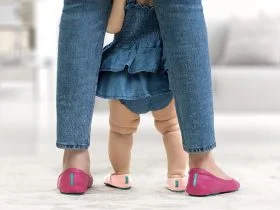The divorce rate in the United States has been declining for years, but statistics still show that roughly 40% of marriages end in divorce. In 2020, more than 630,000 divorces were granted in the U.S., meaning more than 1.2 million people were divorced that year. As common as it may be, filing for divorce and ending a marriage is rarely easy.
Agreeing on delicate issues like child custody and the division of your marital property can be trying. Even if your divorce is uncontested, the process can be confusing and time-consuming. However, with a knowledgeable California divorce lawyer on your side and a clear understanding of the steps in a California divorce, you can quickly and efficiently handle any issues that may arise during your divorce proceeding.
If you have questions about the divorce process in California, contact (619) Divorce today to speak to an experienced San Diego divorce lawyer about your options under California law.
Reader's Roadmap
Key Takeaways
- Approximately 40% of marriages in the U.S. end in divorce.
- Divorces in California can be contested or uncontested, depending on whether the spouses agree or disagree on certain issues.
- In most divorces in California, marital assets and debts are divided equally (50/50) between the spouses unless other arrangements are made.
- Hiring an experienced divorce lawyer is the best way to protect your rights, even if your divorce is uncontested.
What are the Steps in a California Divorce?
By law, a specific procedure must be followed to complete a divorce in California. The following is a basic outline of the steps in a California divorce:
- Filing a Petition for Divorce: The spouse requesting the divorce, known as the petitioner, files a petition with the court to dissolve the marriage and serves the papers to the other spouse, the respondent. This begins the divorce proceeding.
- Responding to the Petition: The respondent has 30 days to respond to the petition and agree to participate in the divorce proceeding. If the respondent fails to respond to the petition within 30 days, the court may decide the divorce issues without their input. This is known as a default. If the respondent doesn’t respond because the spouses already have an agreement, this is known as a default with an agreement.
- Financial Disclosures & Temporary Orders: Before the divorce is final, the spouses must share financial information. They must also agree on how to divide their property and handle their finances. And if they have children together, they must decide how their children will be cared for and supported after the divorce.
- Settlement or Trial: A complete settlement occurs when the spouses can find a resolution to all issues related to the divorce. The case will be finalized through a trial if the divorce can’t be resolved through a settlement.
- Finishing the Divorce: Once these matters are settled, the spouses can submit the final paperwork to complete the divorce. Note that the divorce won’t be final in California for at least six months from the date the divorce papers are served.
Do I Need to Hire a Divorce Attorney?
California law does not require you to hire an attorney to get a divorce. However, a skilled divorce attorney can be an invaluable asset in your divorce proceeding, especially if there are contested issues, such as child custody or support. Divorcing couples with considerable property, assets, or debts may also find it beneficial to have a divorce lawyer handle these issues with the care and attention they require.
Preparing to File for Divorce in California
Like many states, California is a no-fault divorce state, meaning you can file for divorce without proving that your spouse did anything wrong. You can get a divorce in California even if your spouse doesn’t want one. However, to file for divorce in San Diego, you or your spouse must have lived in California for the past six months and in San Diego for the past three months.
Can You Divorce in California Without Going to Court?
California law does not require a court appearance for a divorce, and if the spouses can agree on all matters arising out of the divorce, they may be able to avoid court altogether. If there are any issues they disagree on, they may go through the court process and have the court decide for them.
Is a California Divorce Always 50/50?
California is a “community property” state, which means any property (or debt) the couple acquired during the marriage is shared property to be split evenly in divorce. If you divorce in California, your marital property will most likely be divided 50/50, with some exceptions. If you have a prenuptial or postnuptial agreement that details how to deal with certain assets in the event of a divorce, or if you come to some other arrangement with your spouse, your assets may be handled differently.
How Much Does it Cost for a Divorce in California?
If you file a petition for divorce in California, you will be required to pay a fee of between $435 and $450 to initiate the case. You may qualify to have the fee waived if you can’t afford it, in which case you can file for free. The cost of filing for divorce in California depends on several factors, including whether the divorce is contested or uncontested.
Free Divorce Consultation in San Diego
Divorce can be messy and emotional, especially if there are children involved or if the divorce is contested. Even if you think you and your spouse can agree on most or all issues related to your divorce, unforeseen circumstances may make your divorce case more complicated than expected. If you are considering filing for divorce in San Diego, your first step should be to consult a reputable San Diego divorce lawyer. At (619) Divorce, we offer free divorce consultation, which means you can discuss your legal options with our San Diego divorce experts with absolutely no obligation to hire our firm.
How to Contact Our Divorce Lawyers
Our divorce lawyers at (619) Divorce, led by top-rated family and divorce attorney Steve Smith, are ready to help you with your divorce case. Contact us today at (619) 503-3050 or visit our website to learn more about the steps in a California divorce.







Leave a Reply
View Comments